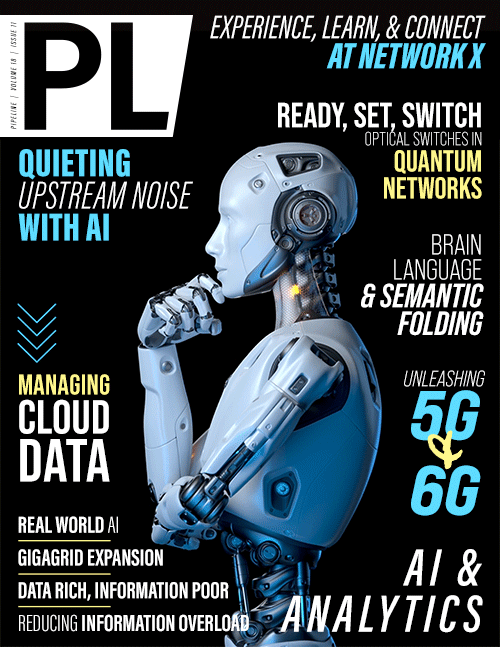Using AI to Automate HFC Upstream
Noise Localization
Looking toward solutions
The amount of data produced in a DOCSIS network is extremely large, and using human analysis, it is virtually impossible to correlate the data points with enough precision to be able to predict where and when noise is occurring. Promptlink’s decades of experience in the field pointed the way to R&D efforts using AI modeling and machine learning (ML) to overcome this problem. We now apply data science techniques and ML to evaluate the massive amount of network management data and pinpoint possible noise locations for investigation. This Promptlink technique also provides instructions for technicians to diagnose specific impairments causing the noise and repair them.
Noise in an upstream channel, no matter where it originates, affects all the modems communicating on the channel. A Big Data approach that looks at many different interfaces on the channel supplies a way to detect the signature of the noise, identify the type of impairment that can cause the type of noise present and pinpoint the type of network elements that such impairment can be present in.
Multimodal machine learning approach used in noise localization
One of the most promising areas in AI research is multimodal machine learning (MMML), which aims to build models that can interpret multiple streams of data in the process of deducing a hypothesis of what it is looking at. For example, when identifying the make and model of an unknown car using machine learning techniques, it is possible to train the ML engine using a set of labeled pictures of the different cars or a set of labeled sound data from different cars traveling at different speeds. A multimodal ML engine in this case would have a model that can interpret both pictures and sound data sets and predict much more accurately the make and the model of an unknown car.
In the case of noise localization, a similar approach would provide a more accurate prediction of a source point of noise. The Promptlink approach with multimodal machine learning in noise localization initially considers all network elements (amplifiers, splitters, taps, and more) plus the customer premises, including passives and the CPE inside the home, and the network segment between the two network elements. Any of these can be considered and labeled as Points of Interests (POI), where noise is most likely being generated with certain equal probability. Using different data sets, the probability for a POI being the point (or one of the points) of noise is re-estimated. Therefore, the noise localization will run iteratively and end up finding the Points of Interest with the highest probability of being the source of noise.
Furthermore, other data science techniques are applied to extract additional information such as types of noise, types of impairments causing noise and types of network elements where the impairment can happen.
Parameters obtained or predicted using data science techniques and used in multimodal machine learning include:
Types of noise
- Noise generated inside the network: This category is generally related to different nonlinear distortions. It can be caused by amplifier misalignment or by corrosion in passive network elements. Examples of this type of distortion are common path distortion and passive intermodulation distortion.
- Noise entering the network from outside (Ingress): This category also has several different characteristics. Impulse noise caused by machines is a good example. Other examples are white noise or any other noise that is present in the environment along with impairment, such as physical damage to a cable or a loose connector, which allows the outside noise to enter the network.



















